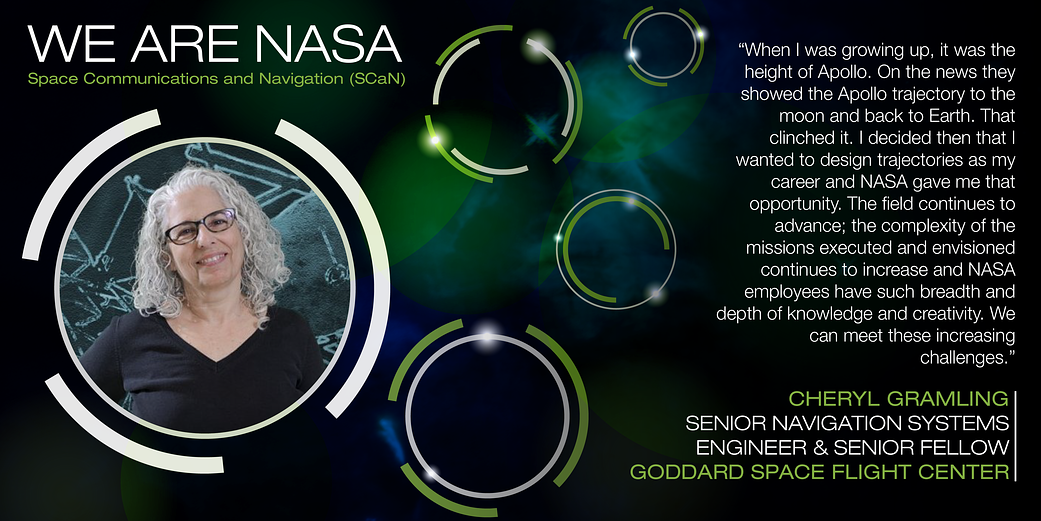What makes your job at NASA exciting or unique?
Navigation is a niche area. I’ve had the privilege to work on missions from the space shuttle to the Tracking and Data Relay Satellite, from the Compton Gamma Ray Observer to the Magnetospheric Multiscale Mission, from the Earth observers Terra, Aqua, and Aura to Lucy, which will explore the Trojan asteroids. Besides performing the navigation analysis and creating the tracking data systems for these missions, I had many opportunities to learn about other spacecraft subsystems through deploying onboard navigation. As a navigator, this gives one a unique perspective on the full scope of constraints involved in executing NASA’s complex missions throughout their life cycle. The ability to innovate and lead teams to develop the technology through to operations is very rewarding.
How does your position contribute to the future Artemis missions?
Within my Branch, we develop concepts to enable missions to navigate throughout their mission lifetime, no matter what orbit regime or environment they encounter. Our multi-mission operations in the Flight Dynamics Facility will provide network acquisition data and backup orbit determination for the Artemis missions, and provide similar support to other lunar infrastructure, such as Gateway. Pursuit of autonomous navigation onboard space elements is a main thrust of our work. By ensuring that these integrated software and hardware systems meet the size, weight, power and cost for CubeSats, these tailorable systems can enable specific Artemis missions, surface elements and lunar infrastructure. The product from the holistic and open source approach followed as a tenet in my Branch also offers potential for use by commercial space ventures.
What’s your favorite thing about working for NASA?
When I was growing up, it was the height of Apollo. On the news they showed the Apollo trajectory to the moon and back to Earth. That clinched it. I decided then that I wanted to design trajectories as my career and NASA gave me that opportunity. The field continues to advance; the complexity of the missions executed and envisioned continues to increase; and NASA employees have such breadth and depth of knowledge and creativity. We can meet these increasing challenges.
It is inspiring to be given the responsibility for ensuring success for missions that will discover or prove scientific theories, enhance scientific knowledge or explore celestial bodies — all to advance humankind. I learn something new every day.

























